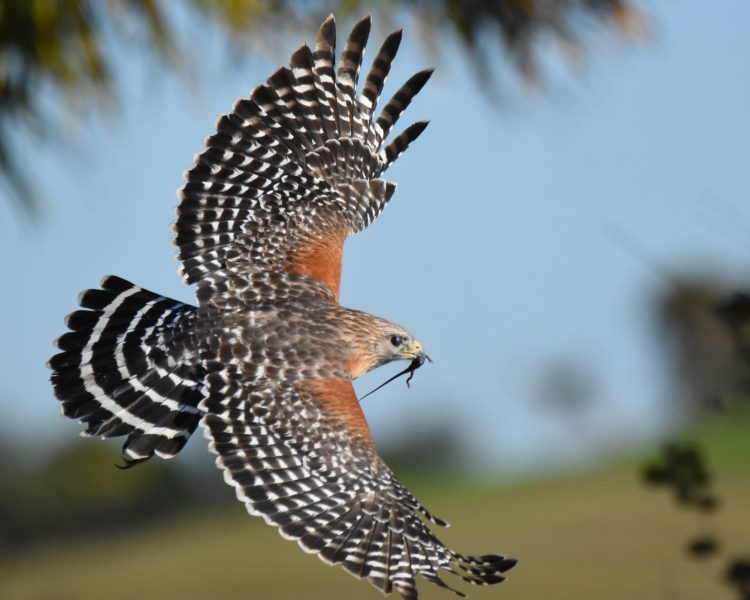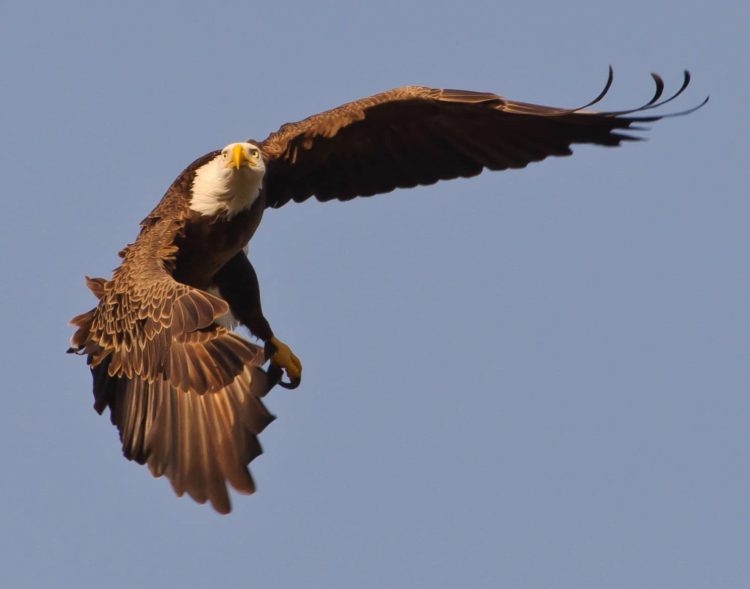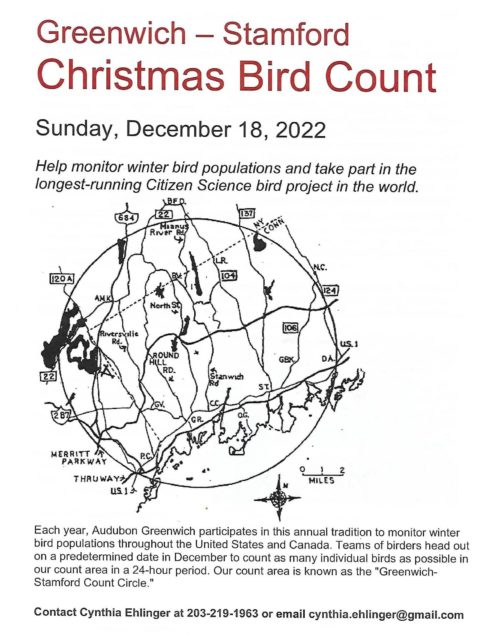By Anne W. Semmes

“You are about to hear,” began Audubon senior education coordinator Ryan MacLean, on the evening of December 2, “one of the best hawk watch histories, if not the best in about 20 years.” So there, in Kiernan Hall at the Greenwich Audubon Center, the 30 plus attendees heard the news from the official hawk watch counter, Harry Wales, the counts of birds over the 2022 hawk migration season, from August 27 to December 1, that brought a record-setting total of 35,407 birds.
There, at Quaker Ridge, the high point in Greenwich backcountry, the preferred pathway for the migratory hawks, there was the one of four record setting species – the Broad-winged Hawk. “The season average is around 9,901,” says Wales, “and we got a whopping 25,112 Broad-winged Hawks this season.” He then related his extraordinary experience of counting on Peak Day September 16, a total of 14,823 Broad-winged Hawks, “which was magical. It was nonstop for that whole day, and I couldn’t count them all alone. There was another counter, Stefan Martin.”
“We had counted one kettle where there were 1,100 birds,” notes Wales. “That was just giving me headaches because I had to keep counting.” He shows a video of himself down on the ground with his bird clicker. “This is me trying to get comfortable because my back and my shoulders were hurting that whole day. This is a late afternoon kettle…You can just see those little dots in the sky and those are the Broad-winged Hawks. And you can hear my clicker.”
During that peak migration moment of Broad-winged hawks from September 15 to 20, Wales tells, “They form kettles up to thousands of birds and by the time they reach Panama and Mexico, they get kettles of hundreds of thousands of Broad-winged Hawks.”
“And we had great Northwest winds,” adds Wales. “And those brought us the bulk of our birds this season. And the month of September also brought some good cloud coverage. Clouds are important for spotting. If it’s an all-blue sky, we’ll lose them into the blue because we can’t see them. But with the clouds, it’s easy to spot like a black spec in a white background…because they can get really high even if it’s like a little wind. And even Bald Eagles can get really high. So, it’s important that those clouds are there.”

‘So, our first season record breaker was Red-shouldered Hawks,” tells Wales. “The season average is around 500 and we broke that easily – our season total was a little over 1,800. And on the 28th of October, we had 532 birds. And that’s not only a new record in one day here at Quaker Ridge, but an East Coast record for Red-shouldered Hawks moving in one day at a hawk watch. But these are great beauties. The adults have that white winged crescent and fiery orange chest adults.”
The second season record breaker – the Turkey Vulture. “So, the season average is around 500, reports Wales, “And we had 2,247. And on the 28th of October we had 391 which was a new record for one day. They are known for their dihedral. They form a V and they rock back and forth when the wind’s pushing them and you can sometimes see the red head.” But there were Black Vultures spotted as well. “These guys are pretty weird. They don’t really move. They flap much more emphatically than a Turkey Vulture and they have silvery wingtips at the end and a black head of course, differentiating them from the Turkey Vulture.”
Not quite breaking the season record was the Sharp-shinned Hawk at a total of 3,408. “It was awesome to see these cool birds migrate,” he tells, “and we often saw kettles of Sharpies, around 10 to 15 birds moving as well, which was a first for me. So, our peak day on the 29th of September was 315 birds and that was fun to look at all of them. They’re small as I said. But they have faster wing beats than their cousin, the Cooper’s Hawk.”
The Cooper’s Hawk was the third to set another season record. “We usually average around 250 and we broke that pretty easily with 915 this season,” tells Wales. “You can distinguish them by their relative size versus Sharpies and they have a different route. Sometimes Coops like to go straight forward whereas Sharpies like to circle and then shoot South.”
Merlins too had a good season. We had 94 this season,” tells Wales, and our peak day was on the 14th of September – we got 11 of them…They’re super aggressive. I’ve seen them dive after Kestrels, Coops, Sharpies, Red shouldered, even Broad-winged. They just don’t like them, I guess. But it’s cool to see these guys and how they behave.”
The Peregrine Falcon, “our fastest bird,” also had a good season, according to Wales. “We had 28 this season, and our peak day was on the 12th of October which was four birds and seeing just one a day is a highlight. But seeing four that day was spectacular. And they will often fly over water as well as some of the other hawks. They’re a highlight on the southeast wind days.”
Count the Bald Eagle for the fourth season record breaker. “So, we did see 359 this season, which was a lot,” tells Wales, “With a peak day of 32 which tied a record for Bald eagles moving on Quaker Ridge. Most of you may know they were in trouble years and years ago, but they had a great recovery and now they are stable and are increasing as we speak. And they almost caught up to ospreys this year, which is a first.”
Lastly, “Who doesn’t love a Golden Eagle? We had 11 this season when the season average is eight. But we had two on the 7th of November and they are different from the Bald Eagles because they often have a little dihedral. They are super exciting to see here. Everybody gets their camera out. And the juveniles, which we predominantly saw here have the white patches and the white tail and the black terminal band which is easy to differentiate from the Bald Eagle.”
“So,” he concluded, “We had four season records: the Turkey Vulture, Bald Eagle, Coopers Hawk, and Red-shouldered Hawk.” Plus, the surprises of 20 Sandhill Cranes and 104 Common Nighthawks. “So, that led us to 35,407 birds,” says Wales. “And if you want to see all the big days, you can go on hawkcount.org. And you can see I write the reports every day here, and you can see years past as well as far back to the 1900s! Thank you for a great season!”







